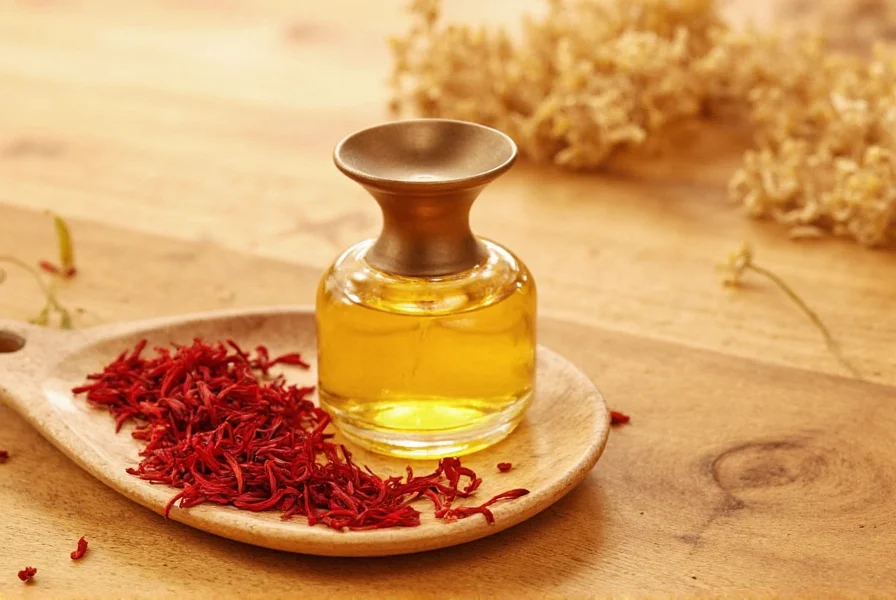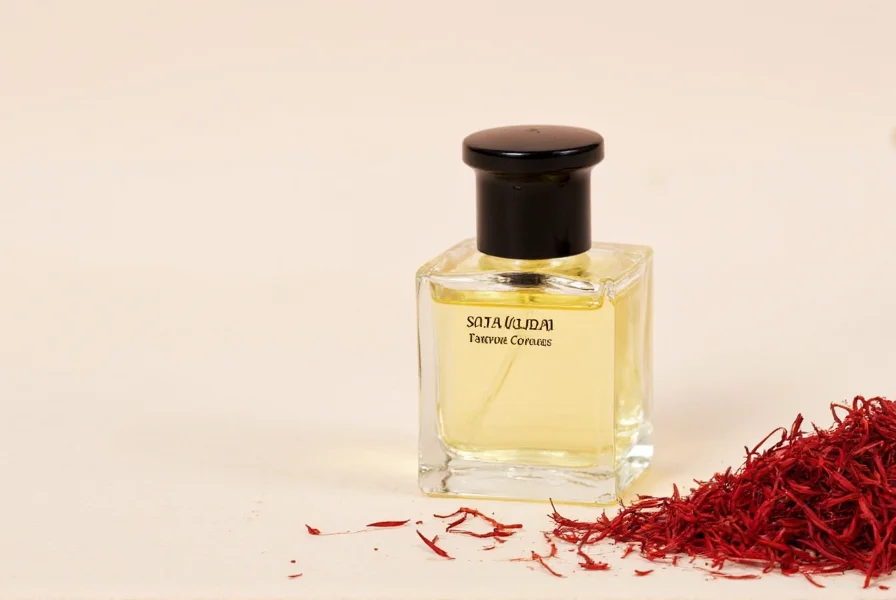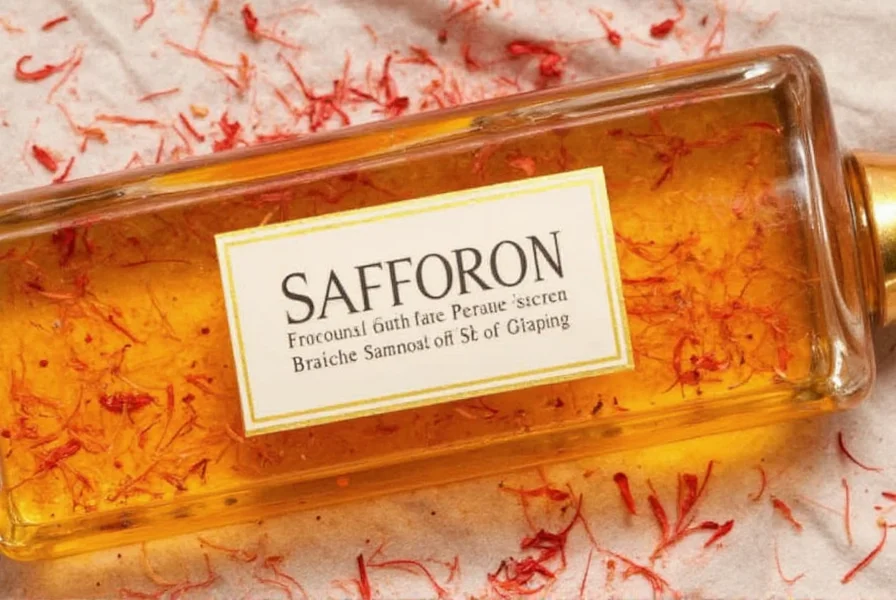Saffron's unique presence in perfumery stems from its complex chemical composition, containing over 150 volatile compounds that contribute to its multifaceted scent profile. When properly distilled and incorporated into fragrances, saffron creates an immediate impression of luxury and sophistication that few other natural ingredients can match.
The Essence of Saffron in Fragrance Creation
What does saffron perfume smell like? The distinctive aroma of saffron in perfumery combines spicy, honeyed, and slightly metallic notes with subtle floral undertones. This precious spice, harvested from the delicate stigmas of Crocus sativus flowers, requires approximately 75,000 blossoms to produce just one pound of dried saffron threads. This labor-intensive harvesting process explains why saffron remains one of the most expensive ingredients in perfumery.
Perfumers value saffron for its remarkable versatility. When used in small concentrations, it enhances other notes without dominating the composition. In higher concentrations, it creates bold, statement fragrances with distinctive character. The best saffron perfumes balance this precious ingredient with complementary notes like leather, amber, rose, or woody elements to create harmonious compositions.
Historical Significance of Saffron in Perfumery
Saffron's use in fragrance dates back to ancient civilizations. Historical records show that Persian, Egyptian, and Roman cultures incorporated saffron into their perfumed oils and unguents. In medieval Europe, saffron was considered a status symbol, often used by royalty in both perfumes and as a fabric dye for luxurious garments.
The spice's journey into modern perfumery began during the Renaissance when European apothecaries and perfumers rediscovered its aromatic properties. By the 19th century, saffron had become a staple in many classic perfume formulations, particularly in the creation of leathery and oriental fragrance families.
Understanding Saffron's Scent Profile
Saffron's complex aroma profile makes it a fascinating ingredient for perfumers. The initial impression is often spicy and slightly medicinal, which quickly evolves into warmer, honeyed notes with subtle floral undertones. High-quality saffron extracts may also reveal delicate metallic nuances that add sophistication to fragrance compositions.
| Scent Characteristic | Description | Common Pairings |
|---|---|---|
| Top Notes | Sharp, slightly metallic, spicy | Citrus, aldehydes, pink pepper |
| Middle Notes | Honeyed, floral, warm | Rose, jasmine, leather |
| Base Notes | Earthy, woody, slightly sweet | Ambroxan, patchouli, vanilla |
Understanding saffron in perfumery history reveals how master perfumers have learned to work with its challenging characteristics. The spice can be unstable in formulations, sometimes fading quickly or interacting unexpectedly with other ingredients. This requires significant expertise to create saffron-based fragrances that maintain their integrity over time.
The Art of Incorporating Saffron into Fragrances
How saffron is used in perfume making involves several sophisticated techniques. Most high-end perfumes use either absolute or CO2 extraction methods to capture saffron's volatile compounds. Some modern perfumers also employ headspace technology to recreate saffron's scent profile synthetically, though purists argue this lacks the complexity of natural saffron extracts.
The concentration of saffron in a fragrance significantly impacts its character. At 0.1-0.5%, it serves as a supporting note that enhances other ingredients. Between 0.5-1.5%, saffron becomes a prominent feature of the fragrance. Above 2%, it creates bold, distinctive scents that showcase saffron's full complexity but require careful balancing to avoid overwhelming other notes.

Why Saffron Remains a Luxury Perfume Ingredient
Why saffron is expensive in perfumes relates directly to its labor-intensive harvesting process. Each saffron stigma must be hand-picked from crocus flowers during a brief autumn blooming period. This intensive process, combined with saffron's relatively low yield, makes it one of the most costly natural ingredients in perfumery.
Despite these challenges, saffron continues to be prized by niche and luxury perfume houses for several reasons:
- Its unique scent profile cannot be fully replicated by synthetic alternatives
- It adds complexity and depth to fragrance compositions
- It serves as a natural fixative, helping other notes last longer
- Its association with luxury and rarity enhances a fragrance's perceived value
Caring for Saffron-Based Perfumes
Saffron perfume care tips are essential for maintaining the integrity of these complex fragrances. Like all fine perfumes, saffron-based scents should be stored away from direct sunlight and extreme temperatures. However, saffron's particular chemical composition makes these fragrances somewhat more sensitive to oxidation.
To maximize the lifespan of your saffron perfume:
- Store in its original box to protect from light
- Keep the bottle tightly sealed when not in use
- Avoid exposing to extreme temperature changes
- Apply to pulse points rather than spraying directly onto clothing
- Consider purchasing smaller bottles if you don't use perfume frequently

Experiencing Saffron Perfume
When exploring saffron fragrances, it's important to understand that this ingredient behaves differently on skin than in the bottle. Saffron scent profile in fragrances evolves throughout the day, with the initial spicy top notes giving way to warmer, honeyed middle notes, and finally settling into a subtle, earthy dry-down.
For those new to saffron perfumes, sampling is essential. Apply a small amount to your wrist and observe how the fragrance develops over several hours. Pay attention to how it interacts with your skin chemistry, as saffron can smell slightly different on each individual. The best saffron perfumes will maintain their integrity while adapting to your unique scent profile.
FAQ
What does saffron perfume actually smell like?
Saffron perfume features a complex scent profile that combines spicy, honeyed, and slightly metallic notes with subtle floral undertones. Initially, it presents sharp, almost medicinal top notes that quickly mellow into warm, leathery middle notes with hints of honey and dried fruit. The dry-down often reveals earthy, woody characteristics that provide excellent longevity. Unlike single-note ingredients, saffron offers multiple aromatic dimensions that evolve throughout the day.
Why is saffron used in high-end perfumes?
Saffron is used in luxury fragrances because of its unique complexity, rarity, and ability to enhance other notes. The labor-intensive harvesting process (requiring 75,000 flowers for just one pound of saffron) makes it exceptionally valuable. In perfumery, saffron serves multiple functions: it adds distinctive spicy warmth, acts as a natural fixative to extend fragrance longevity, and creates sophisticated transitions between different fragrance notes. Its association with luxury throughout history further enhances its appeal in premium perfume formulations.
How long does saffron perfume typically last on skin?
High-quality saffron perfumes typically last 6-8 hours on skin, with the saffron notes evolving throughout this time. The initial top notes (spicy, metallic) last 15-30 minutes, followed by heart notes (honeyed, floral) that persist for 2-4 hours. The base notes (earthy, woody) can continue for several more hours. Factors affecting longevity include concentration (EDP lasts longer than EDT), skin chemistry, application method, and storage conditions. Properly stored saffron perfumes maintain their integrity for 3-5 years.
Can saffron perfume cause skin reactions?
While rare, some individuals may experience skin sensitivity to saffron in perfumes, particularly those with existing allergies to crocus plants. High-quality saffron perfumes use properly processed extracts that minimize this risk. To test for potential reactions, apply a small amount to the inside of your wrist and wait 24 hours before regular use. Those with sensitive skin might prefer alcohol-free saffron fragrances or lower concentration formulations. Always patch test new fragrances, especially those containing potent natural ingredients like saffron.
What season is best for wearing saffron perfume?
Saffron perfumes work well year-round but particularly shine during cooler months. Their warm, spicy character makes them ideal for fall and winter, where they provide comforting depth against colder temperatures. In spring and summer, lighter saffron formulations (with citrus or aquatic notes) can work well, especially in the evening. The versatility of saffron means it can be adapted to any season depending on the supporting notes in the fragrance composition—paired with citrus for summer or vanilla and woods for winter.











 浙公网安备
33010002000092号
浙公网安备
33010002000092号 浙B2-20120091-4
浙B2-20120091-4